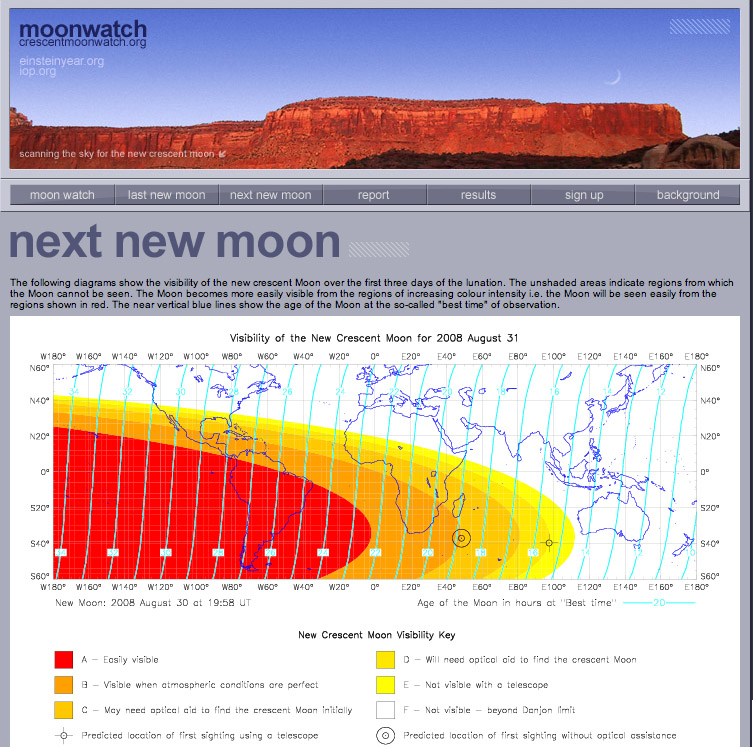February 10, 2018
Seeing & Reporting Thin Crescents
Originally published August 31, 2008

image by Moonwatch
I was amazed* to find that Her Majesty's Nautical Almanac Office (NAO) created a web page 3+ years ago to encourage people to observe the Moon as soon after New as possible. The site has maps showing when it ought to be visible, an online form to collect reports, and reports of observations since Oct 2003. The NAO proposes to use observers' reports to improve the models used to predict the earliest sighting of the new crescent moon. Only 71 reports were submitted for the Aug 1, 2008 New Moon, so if LPODites look for the Moon this evening, Aug 31, and the next, and report it we can greatly increase their statistics.
Chuck Wood
- "Amazed" because I think of NAO as the staid producer of the annual Nautical Almanac, which used to be an absolute necessity for every serious observer before the Internet made such information available whenever needed. Encouraging observation of thin crescents is socially important for Muslins, but has no particular scientific value. But asking the public to do it increases awareness of the Moon and is a mild example of Citizen Science, an effort to improve awareness and understanding of science by encouraging data collection and analysis by normal citizens. Amateur astronomy is perhaps the oldest branch of citizen science. I recently published a related article called Science for Everyone: Visions for Near-Future Educational Technology. Unfortunately, its in a new, expensive journal (International Journal of Information & Communication Technology Education, Vol. 4, No. 4) that few people have access to.
Yesterday's LPOD: What? More Tycho?
Tomorrow's LPOD: Light & Dark Musings
COMMENTS?
Register, Log in, and join in the comments.



